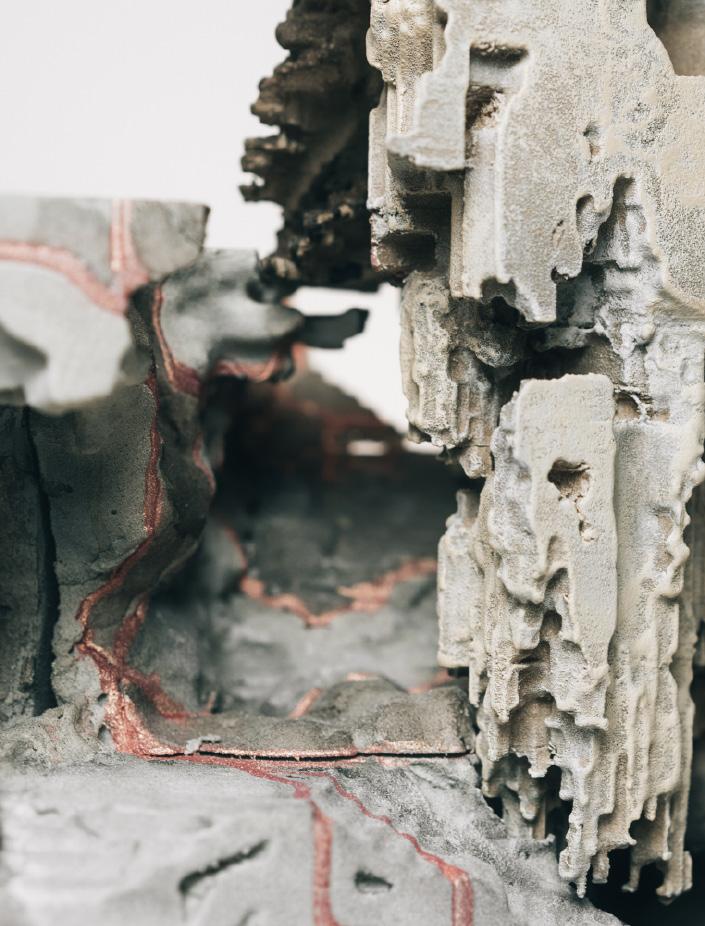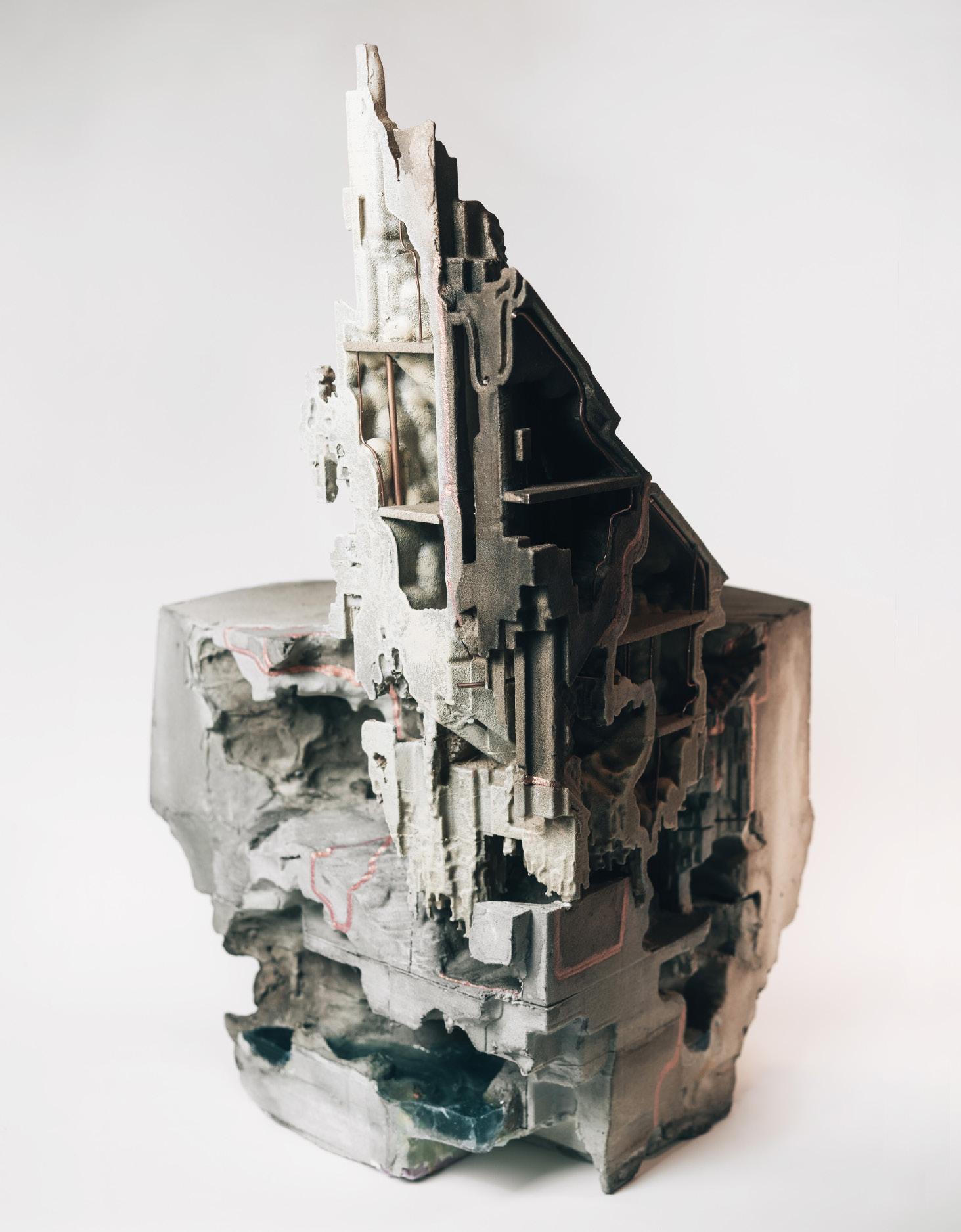
1 minute read
KINTSUGI GROTTO
ARCH 206 | SPRING 2021 (2nd year)
Role: Lead Design | Lead Representation | Physical Model
Advertisement
Software: Houdini, Rhino, Keyshot, Unreal Engine
A grotto is an artifact that by design displays its natural state, operating between an object and a garden. By studying the ambiguity between natural and artificial, our building explores ancientness as an aesthetic condition that creates an environment allowing for the coexistence of human and non-human. The building is composed of fragments that vary depending on their perceived age, material, and the extent to which they display their natural state. In the shift from Anthropocene to ecocentrism, moments of coexistence have been designed such as the striations, slopes, cracks, and pockets on the exterior surfaces that are inhabited by plants, seeds, and other organisms. In certain moments, the rose gold metal seam performs similarly to the Japanese technique of kintsugi; it highlights the role of time, weathering, and imperfections within the life of the artifact.
The notion of the grotto as an artifact designed specifically for the interaction of humans with non-humans was taken advantage of in terms of the experiential perception of the building. As one enters the building underground, the metal becomes inhabitable through its transitions into familiar human spaces such as the staircases and balustrades to the nonhuman spaces in the grotto itself. It highlights the natural state of materials as well by acting as a border between the material in its natural state versus a polished, maintained, artificial.
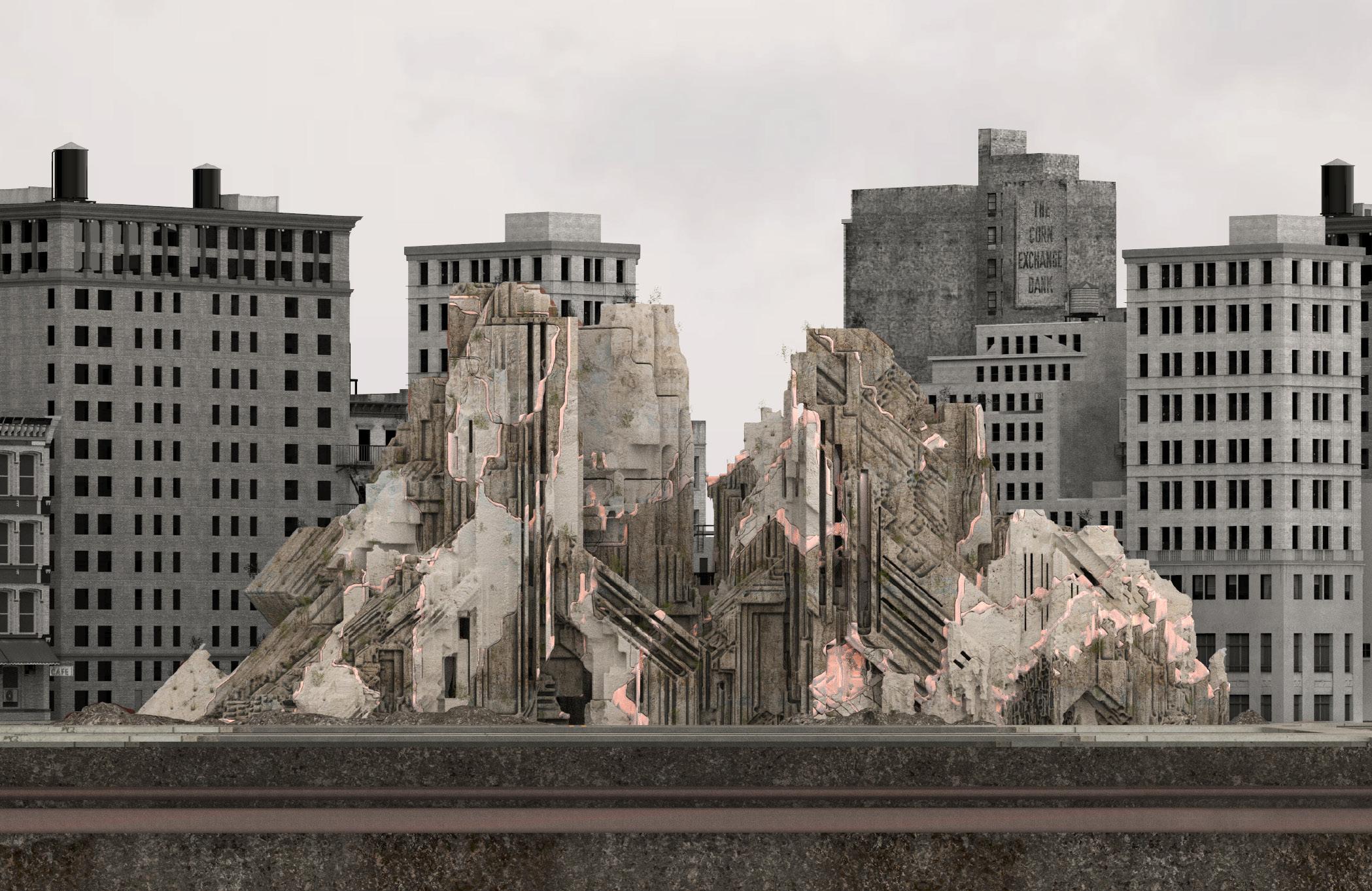
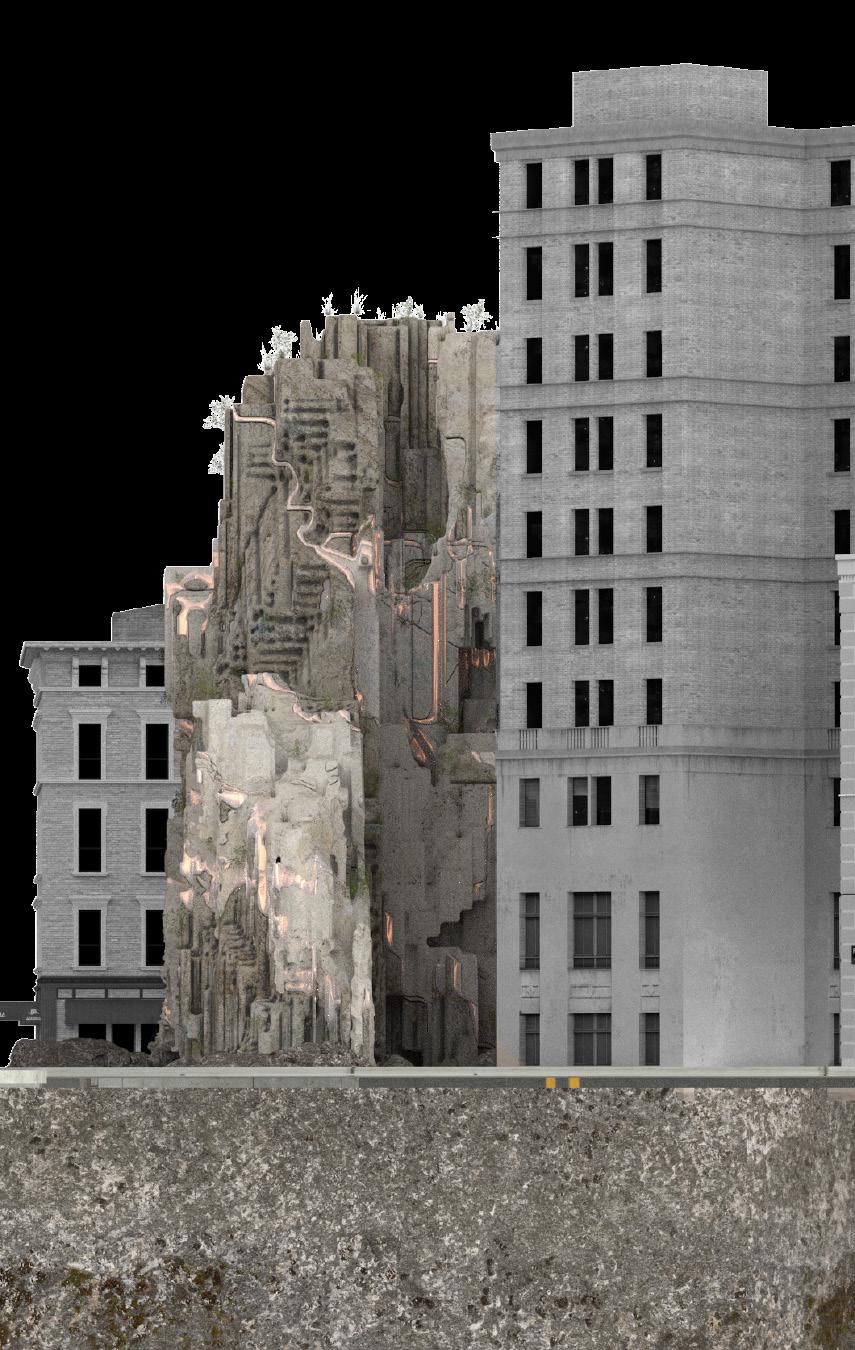
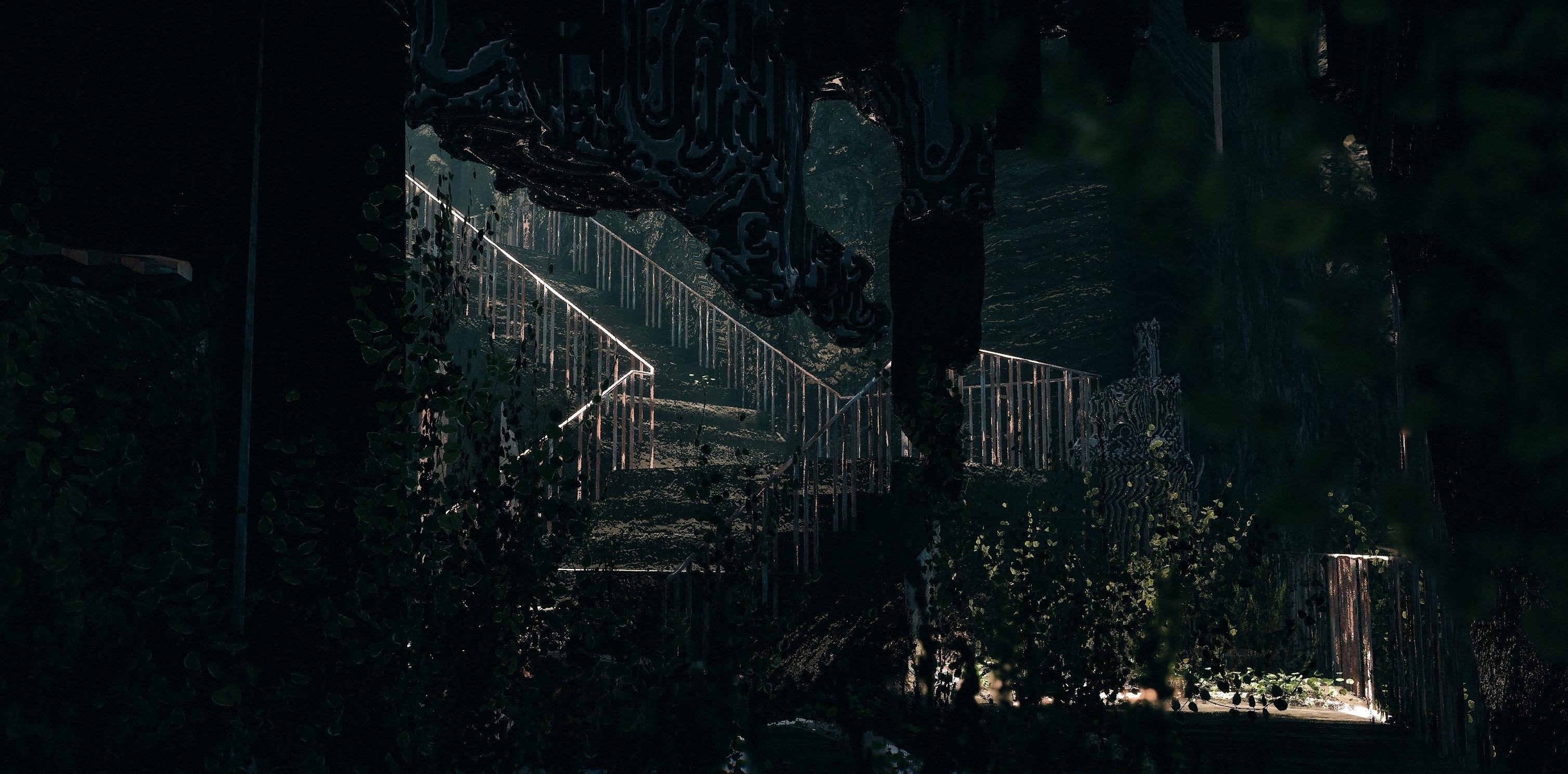
The project displays the ability of the non-human to be implemented into a site and propagate within a controlled region. By working with parts, the ambiguity about the overall figure of the building can be created. This makes the building more challenging to be immediately perceived by a human, and begins to raise questions about its other inhabitants and the forces that shaped it.


